It is a delight to report some positive news from Sierra Leone. The organization responsible for most of the rural power installations has resumed normal operations, including in the areas worst hit by Ebola.
Too much of the world only reaches the international media when the news is bad. This is especially true of West Africa and in particular Sierra Leone, which deserves to be a more prosperous nation: it has rainforest-covered mountains meeting tropical beaches, abundant natural resources including diamond deposits, and was ranked among the top African nations in recent Peace Index calculations.
The majority of solar power in Sierra Leone is installed by Energy for Opportunity, either directly or by subcontracting. In rural Sierra Leone, grid electricity is available to only 2% of the population, and fuel for generators is very expensive to import and transport. Solar electricity is typically the cheapest option in the country, not just the greenest. The organization was formed by Simon Willans and Paul Munro (my brother) and I served as Chief Information Officer from the formation of the organization until I founded Idibon in 2012, when I moved to the board.
Life returning to normal
From our director:
- “Things are finally getting back to (almost) normal in Sierra Leone. Out where I am in the East, which is the epicentre of the ebola outbreak, things have calmed down and there have not been any cases for around a month. The government has said school will open in March and in general it looks hopeful that Ebola will be a thing of the past come April or May.”
But this article is not just about the international contributors to solar in Sierra Leone, it is about those who grew up there and will be greatest contributors to development. There are more than 100 people who have an income thanks to Energy for Opportunity, and only one of them was not born in the region (and that person has lived there more than a decade). Almost every not-for-profit in global development aims to transfer there skills to the local population in order to increase the professional capacity and keep salaries within the region. I’ve never seen an organization do this so well. By working closely with engineers from within the country, from when they were students with no experience, to managers more than 10 years later, it is safe to say that Energy for Opportunity’s engineers are not just the best solar engineers from the region, they are best solar engineers there, period.
In an earlier post I shared the sad figures that deaths from other preventable diseases are 10x the deaths from Ebola. These figures are just as important in recovery. In addition to the immediate threat of reduced services as a result of the Ebola outbreak, there was the long-term threat that many skilled professionals would leave the country and not return. The future of Energy for Opportunity was in question as the country was shut down in the midst of the Ebola outbreak. So it was sigh of relief to hear about how the operations are returning to normal this week, with a report from Kenema, the middle of one of the worst hit regions.
Kenema, in the south-east of Sierra Leone, bordering Liberia, was a local epicenter for the Ebola outbreak.
The top solar engineers in Sierra Lone
The real recovery should be measured in how quickly development can restart in the region, not just in the number of Ebola cases. Many of the hospitals and clinics in the regions worst hit by Ebola have power thanks to a decade of prior planning, prioritization and installations by local solar engineers.
Two of these engineers are Jalloh and Idrissa, (Chernor Marju Jalloh / Marjcess Cessmarj and Idrissa Tarawally).
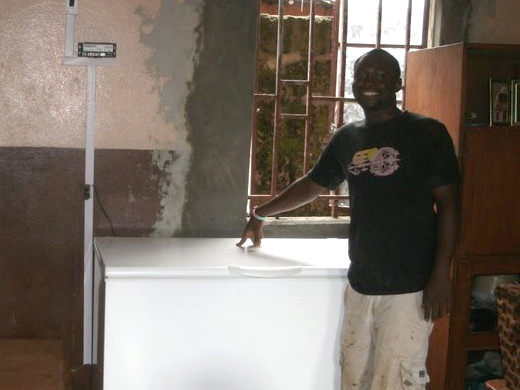
Idrissa with a newly installed fridge at an orphanage at Port Loko in 2010. The orphanage was quarantined for 21 days during the crisis, making self-sufficiency vital.
Many hospitals in the epicenter had power thanks to their planning and projects in the years leading up to the outbreak.
Panguma Hospital is one of them. Thanks to EFO’s work, it had reliable power when the Ebola outbreak hit. But the best of plans can be suffer from bad timing. Immediately before the outbreak, EFO had received a grant from the EU to install solar power systems in rural clinics, schools, and in some cases entire communities. The focus was on the eastern and northern provinces, where the Ebola outbreak was worst. The outbreak stopped the installations and threatened the existence of the organization as a whole. If the best engineers left Sierra Leone for work elsewhere (and who could blame them) it would take another 10 years before that engineering capacity could be rebuilt within the nation.
Fortunately, they found a way, working in the face of the dangers:
- “The EFO team have completed over 150 site evaluations across the country … despite some massive literal roadblocks!” (Simon, reporting from Kenema)
Jalloh has lead the day to day operations. To make up for the delay in installations within the worst hit region, the team spent time increasing the training of the team in the capital, Freetown, with all of the technical staff completing two online PV classes from a project partner.
Idrissa and Simon are planning on going to Colorado for advanced lab training that can then be used to set up similar facilities in the Sierra Leone polytehnic Universities. This will increase the engineering capacity with Sierra Leone, making it more resilient.
I wish them all the best in helping Sierra Leone recover from the epidemic and create the infrastructure needed to better prevent the spread of any future outbreaks!
Robert Munro
23 February, 2014
@WWRob
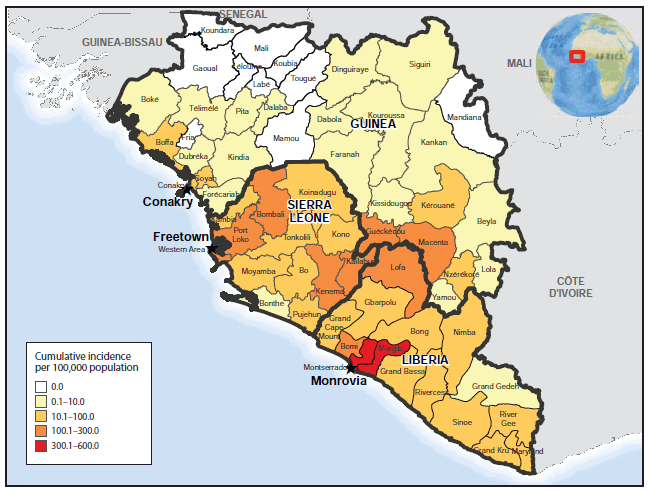
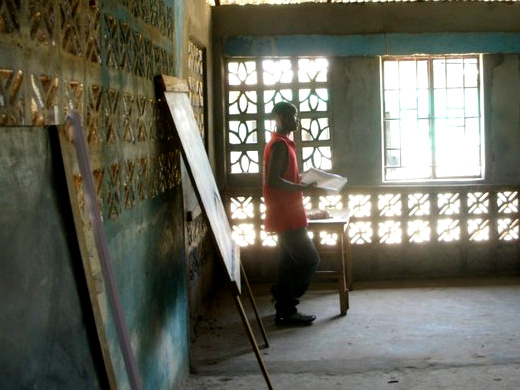
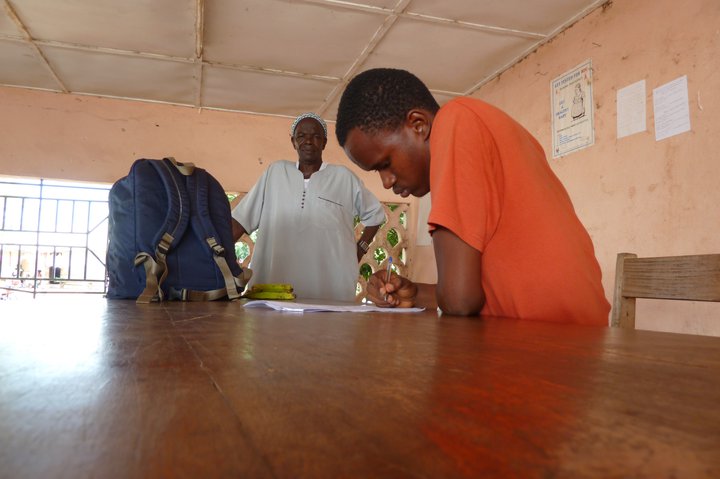
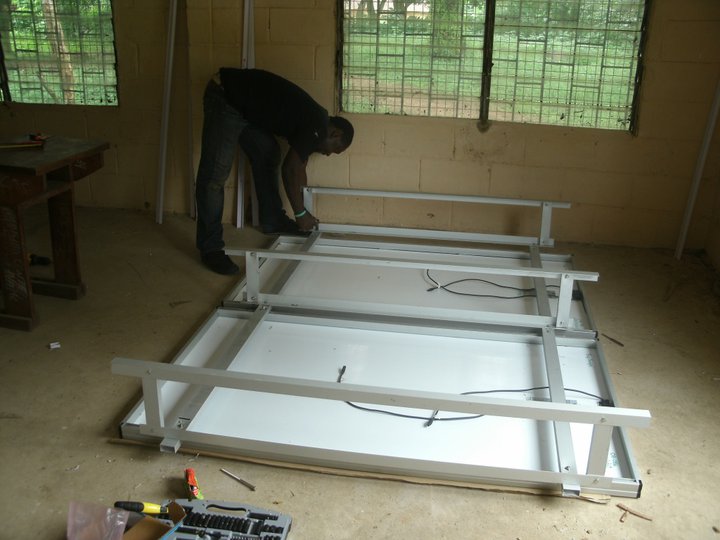
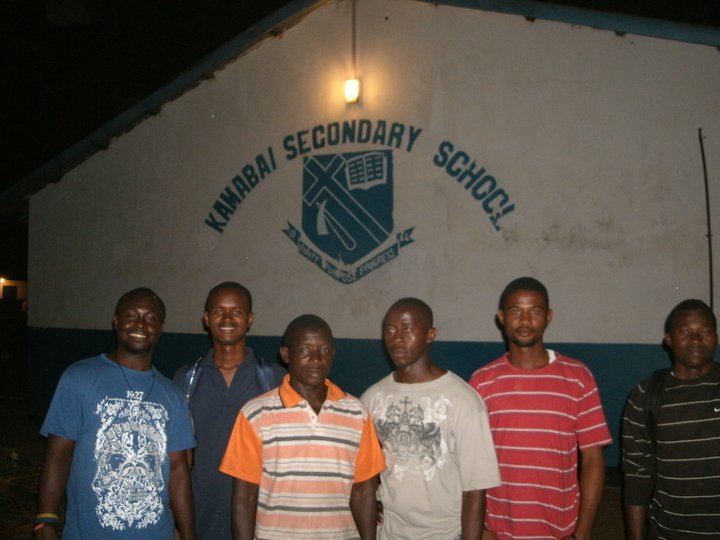

February 23rd, 2015 at 5:13 pm
WTG EFO. So glad to hear you are marching forward. You have all been in my thoughts and prayers.
February 24th, 2015 at 8:01 pm
Robert, thank you for sharing! We don’t hear these stories enough as the media moves on
March 6th, 2015 at 12:12 pm
Thank ever so much for these cardinal information. Please notify me when new information is publish.
March 6th, 2015 at 2:27 pm
Thanks for your hard and selfless work. Solar energy is organic/natural!. Could you please popularize this positive news in Ebola recovery using SLBC TV and other multi-media channnels.
Bravo
March 9th, 2015 at 12:31 am
this is meeh, imelda jimenez felix ( goniabo ) im here in negros occidental philippines. i want you to know that my blood is an coulor ORANGE. so iwant to know want is the coulor of the ebola blood coulor;;; sometimes i fell not better, so i request the sciecenties to cheacking my general body in personal, not my brain is a back and front. thankZ,